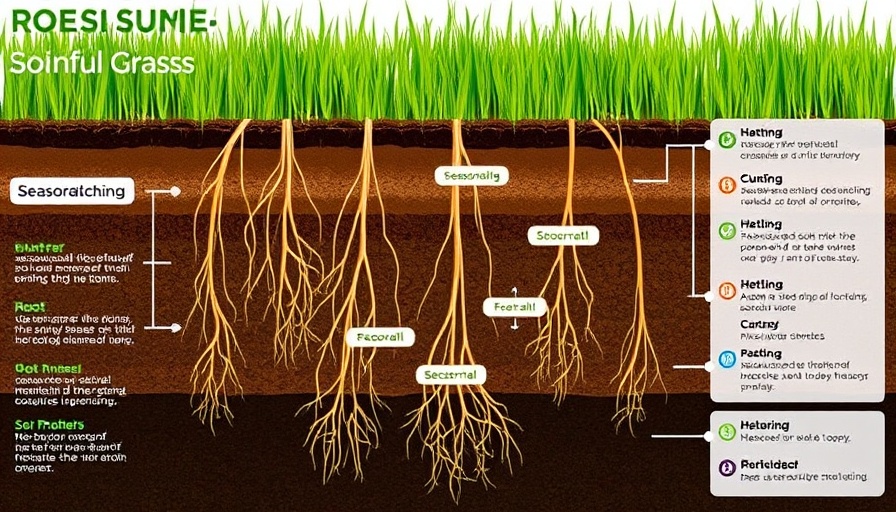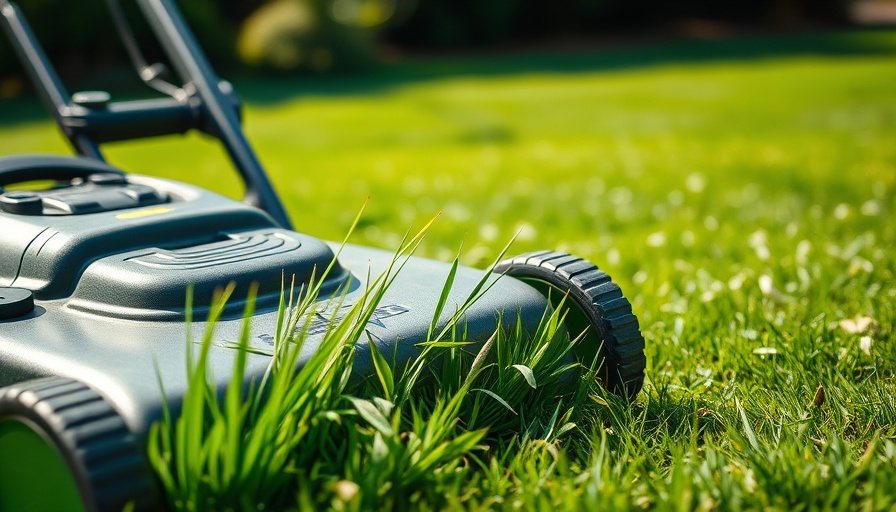
Understanding the Importance of Timing for Lawn Dethatching
Dethatching is a crucial aspect of lawn care, significantly impacting the health and growth of your grass. The buildup of thatch—a mixture of dead and living roots—can inhibit your lawn's ability to absorb essential nutrients, water, and sunlight. Timing your dethatching correctly involves a keen understanding of your grass type, seasonal changes, and individual lawn conditions.
Why Timing Matters in Lawn Care
Successful dethatching revolves around the lawn's growth phase. Dethatching during active growing periods minimizes damage and encourages rapid recovery. Typically, southern grasses, like Bermuda and Zoysia, thrive on dethatching in late spring through early summer, while northern grasses, such as Kentucky bluegrass, are best serviced in early spring or early fall. Both periods coincide with their growth cycles, allowing the grass to recuperate efficiently from this intensive procedure.
All About Thatch: The Good and the Bad
A thin thatch layer—less than half an inch—is beneficial, retaining moisture and insulating roots against extreme temperatures. However, once the thickness of thatch exceeds an inch, it transforms from a protective layer into a choking barrier for grass roots. Grass suffocates from lack of air, and growth can stagnate, making timely dethatching imperative to maintain a healthy lawn.
Conditions for Optimal Dethatching
Your lawn's moisture level plays a significant role in determining the best conditions for dethatching. Ideally, the soil should be moderately moist, not too wet or dry, to maximize the effectiveness of the dethatching process. This condition reduces stress on the grass and allows for easier removal of the thatch layer. A good practice is to wait a few days after a rain to ensure that the soil has dried to an optimal consistency.
Tips for Preparing Your Lawn
Proper preparation can lead to better results when dethatching your lawn. Mowing the grass to a shorter height—1.5 inches for cool-season grasses and 3/4 inch for warm-season grasses—can help provide better access to thatch. Additionally, clearing any debris and watering the lawn if needed can enhance the dethatching process. Taking these preliminary steps can significantly reduce potential damage and make the task easier.
Choosing the Right Timing: A Seasonal Guide
For cool-season lawns, the best time to dethatch is in early spring or early fall, just as the grass begins to grow after dormancy. Ensure that the grass shows signs of growth before proceeding with dethatching in fall to ensure it can recover before the frost sets in. On the other hand, warm-season lawns benefit from dethatching in late spring to early summer, right when the grass is actively growing and primed for recovery.
Understanding Grass Recovery After Dethatching
After dethatching, it’s important to allow a recovery window to ensure the health of your lawn. Grass may take three to four weeks to bounce back, depending on the weather conditions. Coordinating dethatching with other lawn treatments—like overseeding or fertilization—can also maximize your lawn's recovery, helping to create a luxurious and dense turf. Dethatching followed closely by aeration can provide the most benefit.
Common Misconceptions About Dethatching
Many homeowners assume dethatching is necessary every year, but this is not the case. It’s essential to check your lawn’s thatch layer carefully before proceeding. If the thatch layer measures less than half an inch (1.27 cm), further dethatching may be unnecessary. Grass varieties also vary in their need for dethatching; some grasses like ryegrass may only require this process every couple of years, while others like Bermuda may need more frequent attention.
Evaluating Needs Post-Dethatching
Finally, once you’ve dethatched, assess the lawn’s overall health shortly after. Post-dethatching, a great time to overseed is immediately after. Select quality grass seed to ensure long-term lawn health. Additionally, regular maintenance practices, including irrigation and fertilization, can help maintain optimal grass growth and prevent future thatch build-up.
Understanding when to dethatch your lawn can transform your outdoor space. Scheduling dethatching correctly ensures a thriving lawn, ready to face whatever challenges the environment may present.
 Add Row
Add Row  Add
Add 


 Add Row
Add Row  Add
Add 

Write A Comment